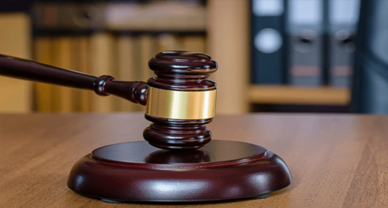Architect’s Moral Rights in India
Introduction
Whether an architect has the right to restrain demolition of his own artistic work i.e. buildings and other forms of construction by the owner of the land it is built on has been recently answered by the Delhi High Court in negative in the case of Raj Rewal v. Union of India & Ors. It concerned the demolition of the Hall of Nation in Pragati Maidan, New Delhi, which the plaintiff has sought to protect under Section 57 of the Indian Copyrights Act. The case will have important reverberations in the development of future jurisprudence surrounding moral rights in India
Moral rights in India
The concept of moral rights originates from the Droit D’ Auteur, a French Concept which states that the creator of the work has a special relationship with the art they have created as it has been created by their own skills and is infused with their own beliefs, and hence the artist has a certain reputation attached to that work and has certain rights arising out of this relationship. Moral rights and Commercial rights are two of such rights that we bestow upon the author of an original work.
Moral rights itself encompasses two major rights, which are the Right to Integrity and the Right to Paternity. The right to Integrity aims to protect the reputation of the author by outlawing any distortion, defacement, derogatory alteration, etc. which can harm the artist’s honor. Right to Paternity guarantees attribution for artists for the creation of his work when such work is reproduced or disseminated through any medium.
Section 57 of the Copyright Act builds upon these very foundations. It provides author rights regarding attribution to his/her own work and the right to protect his reputation. Even after the economic rights of workers are surrendered, moral rights are not alienated, and the author can bring a claimed infringement in case there is a violation of his moral rights.
One of the most important developments in Pre-Raj Rewal Moral Rights jurisprudence was in the case of Amarnath Sehgal v. Union of India[1]. The case concerned certain murals of very high acclaim that were, during the renovation of Vigyan Bhavan, removed and placed in the storage without the permission of the author, Mr. Amarnath Sehgal. He claimed that the dismemberment and treatment of his work of art by government authorities was mutilation and hence affected his honor and reputation. Delhi High Court in this case held that the author’s moral rights were violated as the right to paternity and integrity were essential rights bestowed upon an author by the act. Furthermore, the fact that the defendant was vested with the copyright was irrelevant as moral rights and economic rights do not intertwine.
CaseRaj Rewal v. Union of India and its importance
The plaintiff, an architect called Raj Rewal designed the Hall of Nations, situated in Pragati Maidan in New Delhi. It was declared as the world’s first Large Span Concrete Structurewhen it was constructed. However, in 2016 the Indian Trade Promotion Organization, occupiers of the building in contention proposed construction of a new building in place of the old one, and the building was demolished in 2017. Plaintiff claimed that the demolition of the building was against his moral rights and claimed interim relief.
The court however rejected the claim. Court reasoned that destruction or not displaying a work cannot be said to be infringing artist’s moral rights. It also stated that the Right to property was a right embedded in the constitution itself under Article 300-A, compared to moral rights, which were statutory rights provided by the Indian Copyright Act. Article 300-A states that no person can be deprived of his provided bar authority of law. As constitution rights prevail over the statutory rights, the court upheld the right of the landowner against the moral rights of the architect.
Furthermore, the court relied on Section 52(1)(x) of the copyright act which provides an exception to copyright, stating that reconstruction cannot be considered an infringement of copyright. The section would be left inoperative if the contention of the appellant, that destruction of a building under Section 57(1)(b) is prohibited, is upheld. Therefore, such reading of the law cannot be taken forward and the plaintiff was not granted interim relief.[2]
The importance of this case arises from the fact that the reasoning of the court is contrasting to what the court’s earlier stand in the case Amarnath Sehgal v. Union of India when the court stated that removal and storage of the murals did in fact infringe rights of the author. One possible way to reconcile these two contrasting positions can be done from the fact that the Raj Rewalscope should be limited to buildings and other forms of construction. The factual difference lies in the fact that moral rights in the case of Raj Rewalwent against the constitutional rights of the landowner whereas there was no such contention in the Amarnath Sehgal case.
There is also a socio-economic dimension to the Raj Rewal case which we should keep in mind before scrutinizing this decision. Any construction can only exist for a limited time period (around 75-100 years) before it’s unsafe to utilize due to effects of wear and tear over the years on its structure, either requiring it to be demolished for new construction or simply not utilizing it. WhileRaj Rewal case decision does have an adverse impact on the rights of an architect, a decision in favor of Raj Rewal could have also produced some chilling effects, possibly piling the courts with cases over hundreds of decommissioned constructions occupying land that cannot be utilized for reconstruction.
An example that India can follow is from Australia, where under the Copyright Amendment (Moral Rights) Act, 2000, the owners of the building are required to give notice and consult in good faith the designer or the architect before modifying or demolishing the structure[3]. The act balances the rights of an architect with the need for development. While the act does not create any legal obligations for the owner to incorporate the suggestion of an architect, it ensures that they are aware of the recent development regarding their own constructions and share their opinion on the matter as well. If they are not satisfied with the outcome, they can either go for legal recourse or can simply have their name not be associated with that construction to protect their integrity and reputation. Similar rules in India will give architects means to protect their own integrity as they can be aware of any mutilation or modification being done and can either consent to it or take legal recourse.
Raj Rewal reduces the scope of moral rights of architects and restricts them, giving landowners the right to alter constructions and hence restricting an architect’s ability to protect their integrity. As the judgment came out this year, the full effects of it will be only be seen in the coming years as the jurisprudence further develops from this milestone. However, it does put architects in a precarious situation as it restricts their rights.
Author: Rushil Anand (5th Year), B.B.A LLB, Intern at IP and Legal Filings and can be reached at support@ipandlegalfilings.com.
References
[1] Amarnath Sehgal v. Union of India(2005)117 DLT 717
[2]Raj Rewal v. Union of India(2019) 260 DLT 190
[3] http://www.mondaq.com/australia/x/189018/Copyright/Addressing the moral rights of design consultants
[4] http://www.mondaq.com/india/x/537094/Copyright/Moral+Rights+Under+Copyright+Law
[5] (2005)117 DLT 717
[6] (2019) 260 DLT 190
[7] Murray, A. (2012, July 30). Retrieved from http://www.mondaq.com/australia/x/189018/Copyright/Addressing the moral rights of design consultants

